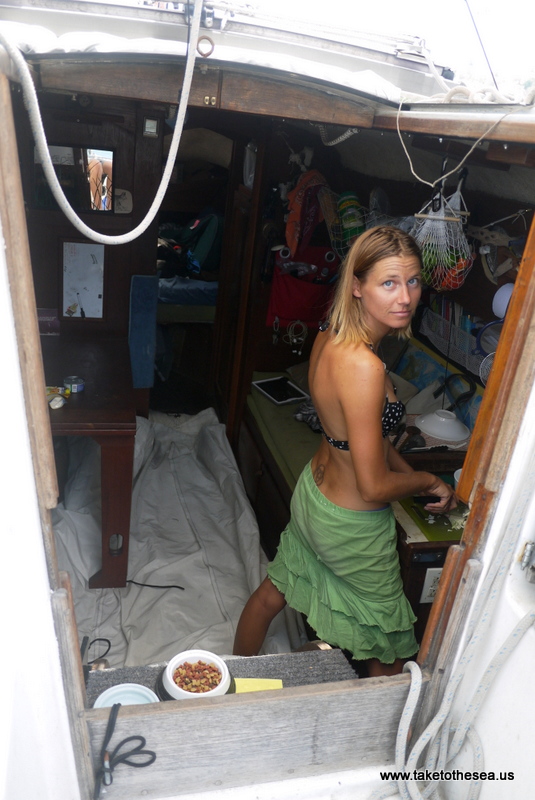
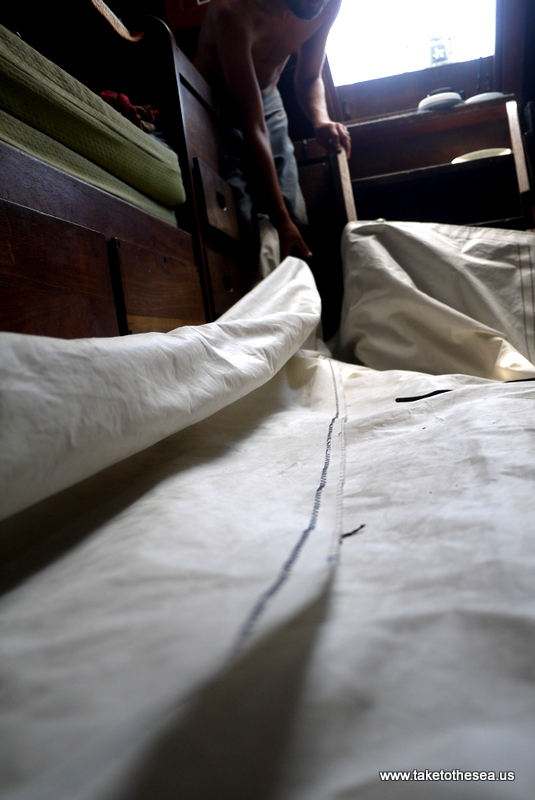
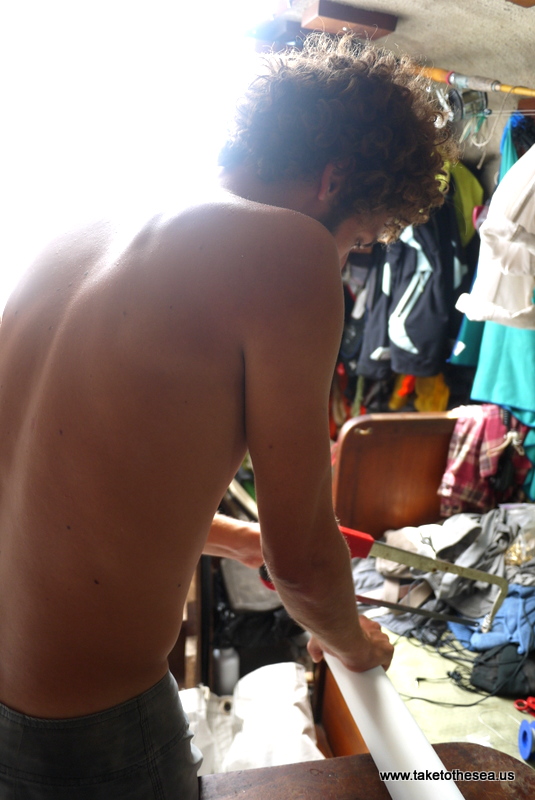
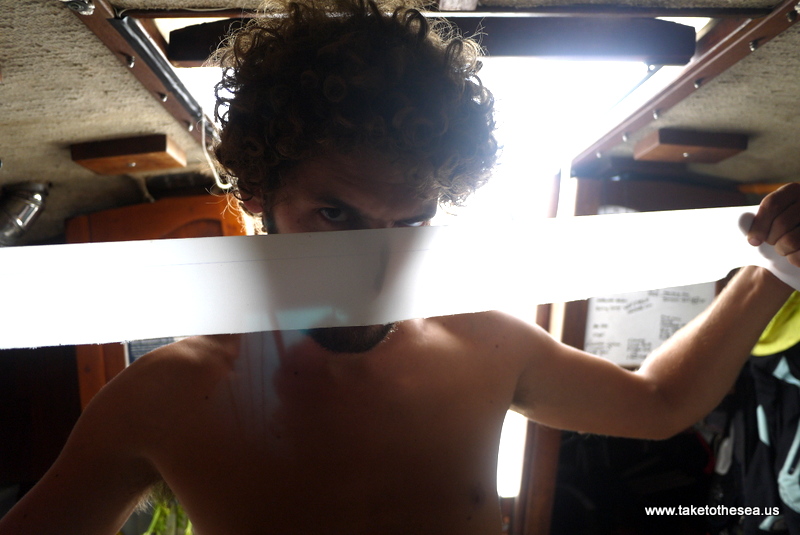
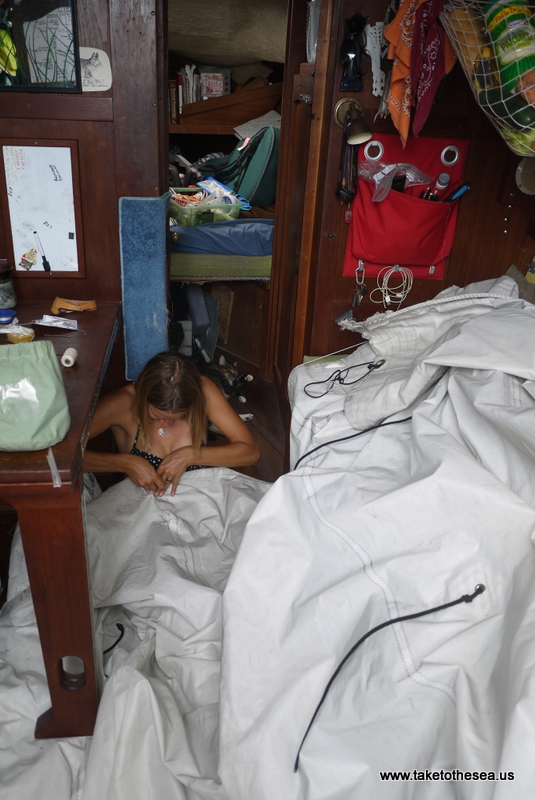
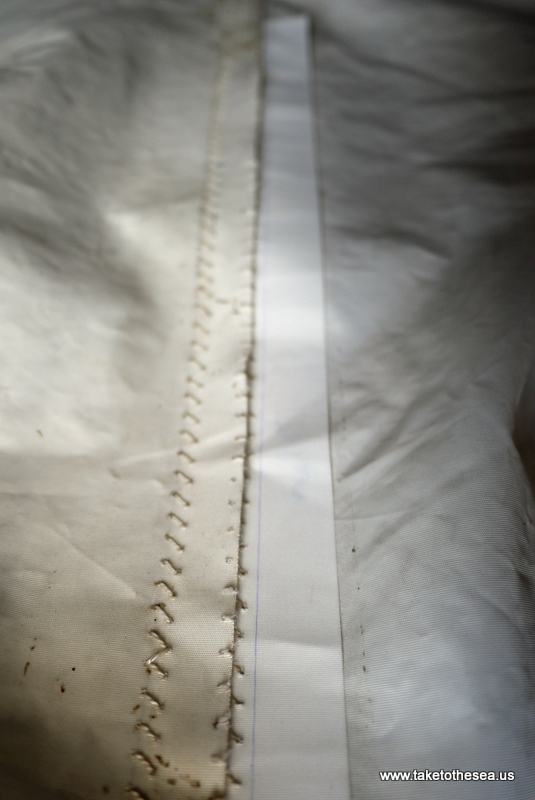
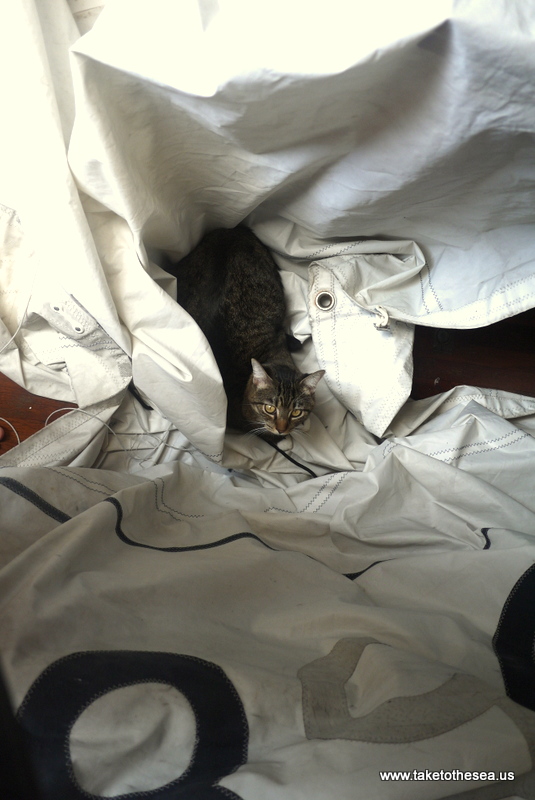
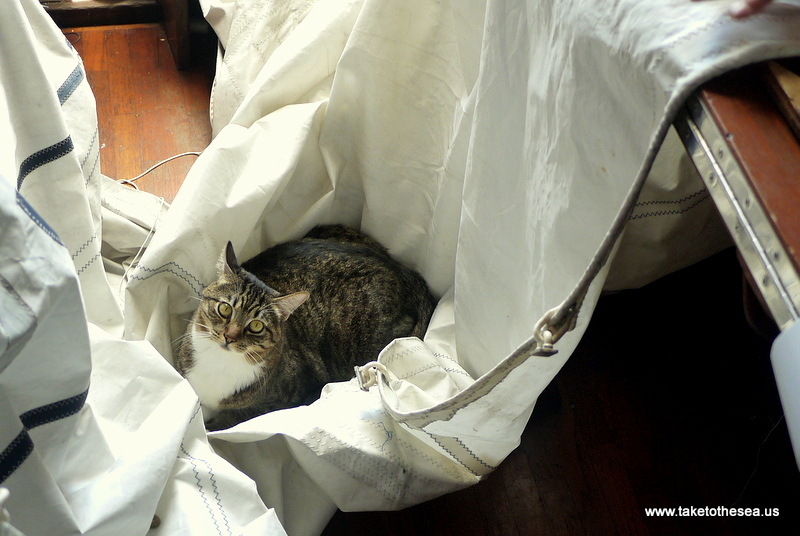
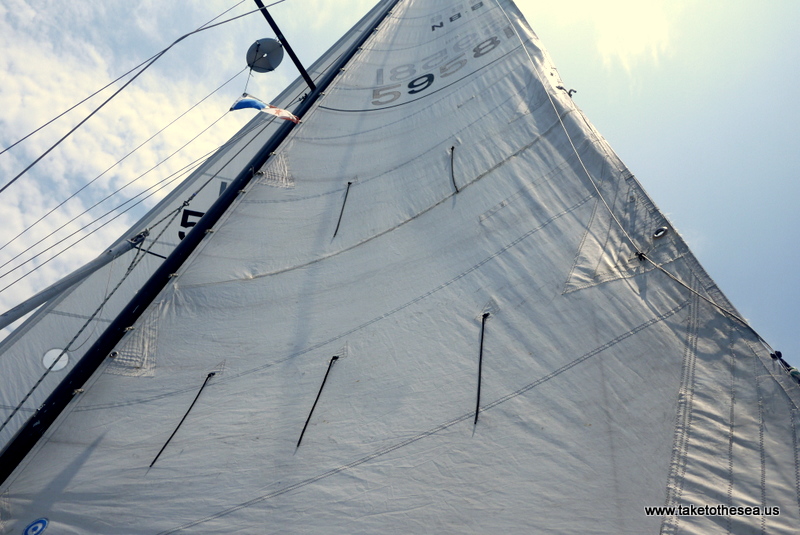
The title of this post is a bit misleading since we didn’t actually repair our sail “at sea.” When faced with the decision whether to round Punta Mala without a main sail, the answer was clearly a no. The beauty of a sailboat with a motor is that you have redundant systems. You can be propelled forward by either diesel or wind depending on conditions…unless of course one of your systems is busted, forcing you to put all your eggs in one basket or just fix the system. Given our recent history with the prop, we weren’t going to tempt fate. So we turned tail and made it the four miles back to Ensenada Benao.
The sail tear we were working with extended nearly from luff to leach along a bottom panel on the main. On the radio I was quick to lament the 13 foot tear we were facing until Jeff gently reminded me that our main sail was only about 10 feet at its longest point. I’ve been known to exaggerate. In future correspondence I revised the estimated repair to 10 feet.
Our main sail needs a little TLC. The fabric still has crinkle in it but the threads have been bleached out by the sun. Most of our tears occur because the weakened thread works itself loose from the seam. When that’s the case, the repair is somewhat straightforward: We get out a needle and our waxed thread and use the existing holes to sew the seam back up. This is a relatively simple, quick task, depending on the size of the repair.
Unfortunately, the tear I’ve come to know as “Punta Mala’s love tap” didn’t just work the threads loose, it yanked them from their holes, tearing those precious holes in the process. When we got to Ensenada Benao and our heads had cooled, we took the main sail off of its tracks and fully assessed the damage. The repair was closer to 8 feet, still big, and the existing holes were almost entirely unusable, meaning we couldn’t simply sew the two panels back together.
The tools we have onboard for sail repair are an assortment of needles, heavy duty waxed thread, a roll of spare sail cloth, sail repair tape, left-handed sailmaker’s palm (Jeff’s a lefty, I’m a righty), wax, other things I can’t remember right now. The tools I wished we had onboard are a SailRite Machine, a professional seamstress, an in-home movie theater with reclining seats, lots of booze and contact cement. We wanted the repair to be strong, to maintain the shape of the sail and also to be pretty (I was a strong advocate for that last one).
After gazing dejectedly at the repair for 15 minutes or so, we entertained a few options:
- Use sail repair tape on both sides and sew the tape onto the sail. This was likely to be the quickest fix, but also the least sturdy, least permanent and least pretty.
- Cut two pieces of spare sail cloth and attempt to sew them over the seam on either side. This would likely be the strongest fix, but it would be difficult to keep the pieces of sail cloth lined up (without contact cement) and to use the existing holes as templates. Plus we would be sewing through three to four pieces of sail cloth by hand, which would take a ridiculously long time.
- Cut one piece of spare sail cloth and sew it over the seam on one side. This would be easier than trying to sew patches on both sides but we were still running into the issue of keeping the sail cloth lined up with the repair without pins or contact cement. It would be hard to maintain the sail shape.
- Cut one piece of spare sail cloth and sandwich it between the two seams. This would allow us to use the existing holes as templates and we would only have two pieces of sail cloth to sew through at any given point in time. Once we had time or access to a sewing machine we could reinforce the repair with another line of stitches. This would likely be a strong fix, if not also a pretty fix. Still time consuming though.
All in all we were looking at 1-3 days of sewing depending upon the approach and our energy levels.
We initially moved forward with Option 1, but eventually settled on Option 4.
The sail was draped over every available surface in the cabin. We temporarily lost Tack in its folds. An 8 foot cabin is not the ideal workshop for repairing a 200 square foot sail, but at least it was shady down below! The sail repair was approached like an overnight passage…we took shifts with me working most of the afternoon until dinner time, Jeff pulling an all nighter, then me picking up with the morning shift. I love being married to a night owl. We worked together the next day to put the finishing touches on the repair and address any other immediate problem areas. Podcasts were a very welcome source of entertainment and our freeze dried MountainHouse meals were a very welcome source of sustenance.
During my first shift I was ever so slowly pushing and pulling the needle through the stubborn sailcloth (that stuff is serious). During the night shift Jeff had the brilliant idea of using a hammer and nail to “pre-drill” the holes (using the existing holes as a template, thereby speeding up the process quite significantly). I fell asleep to the tap-tap, tap-tap, tap-tap of progress. Sweet, sweet progress. “I’m a machine!” I heard him call out over the anchorage. Or perhaps that was in my dreams. In John Henry like fashion he drove holes through that sail until his manly hands could take no more. I found him passed out on the setee in the wee hours of the morn and ushered him to the V-berth so I could take the sail over the finish line.
The sail started to feel like a normal fixture in our small cabin. Tack became possessive of his crinkly nest, batting at us when we attempted to move him or the sail. I would temporarily lose my sanity when the anchorage became roll-y or my sweat threatened to fill the cabin and drown me. Jelly fish congregated behind the boat with the grandmaster jelly fish holding court for many smaller jellies. The jelly fish convention made swimming a harrowing prospect. The repairs carried on into the next afternoon and evening until a fireworks show onshore beckoned us out of the cabin. We took the fireworks as a divine sign that our repairs were complete and that our third attempt at rounding Punta Mala would be a success.